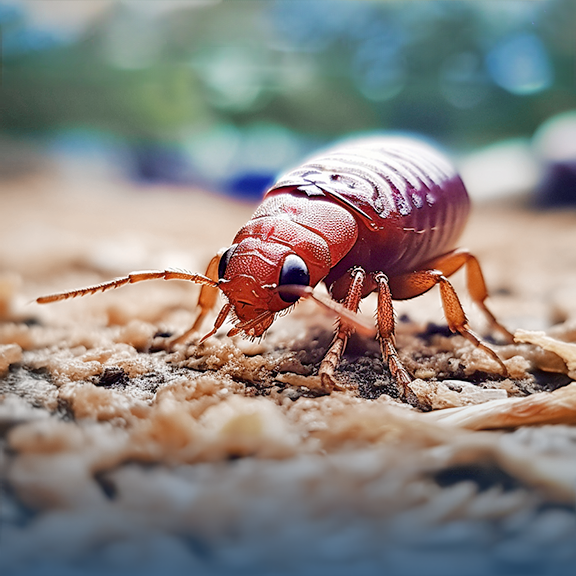Fleas
They might be small in size, but fleas can lead to significant issues - especially for pet owners. These biting insects, scientifically named Siphonaptera, feed exclusively on the blood of warm-blooded animals, and they are especially notorious for bothering cats and dogs. The cat flea, despite its name, is the most common species found in U.S. households. It thrives on both cats and dogs, and occasionally even bites humans.
The Flea Life Cycle
Fleas are skilled survivors thanks to their life cycle, which includes four stages: egg, larva, pupa, and adult. After feeding on blood, female fleas begin laying eggs, often depositing dozens each day. The eggs detach from the host and accumulate in the surrounding areas, such as carpets, pet bedding, and cracks in the floor. Within a few days, the eggs hatch into larvae and, under ideal conditions, mature into adult fleas within three weeks.
Where Fleas Live & Thrive
Fleas usually infest areas where pets spend the most time. Indoors, immature fleas are often found deep in carpets, along baseboards, behind furniture, and in pet bedding. Outdoors, shaded, damp areas like soil under shrubs or porches provide perfect conditions for flea development. Once fleas find a host, they stay put, feeding up to 15 times a day and reproducing rapidly, often before their presence is detected.
How Flea Bites Affect Humans & Pets
While fleas most often bite pets, humans aren’t immune. Newly emerged fleas will sometimes jump onto humans passing by in search of a host. Bites are usually concentrated around the ankles or lower legs and are intensely itchy due to an allergic reaction triggered by flea saliva. Pets are often worse off, suffering from flea allergy dermatitis - a painful condition that can lead to hair loss and skin infections.
Managing Fleas Effectively
Effective flea control requires treating both your pet and the environment to break the flea life cycle and prevent reinfestation. Regular vacuuming, frequent washing of pet bedding, and using vet-recommended flea preventatives are essential steps to breaking the flea life cycle. Fleas can be persistent, but by understanding their habits and taking proactive measures, you can keep your pets and home flea-free.



